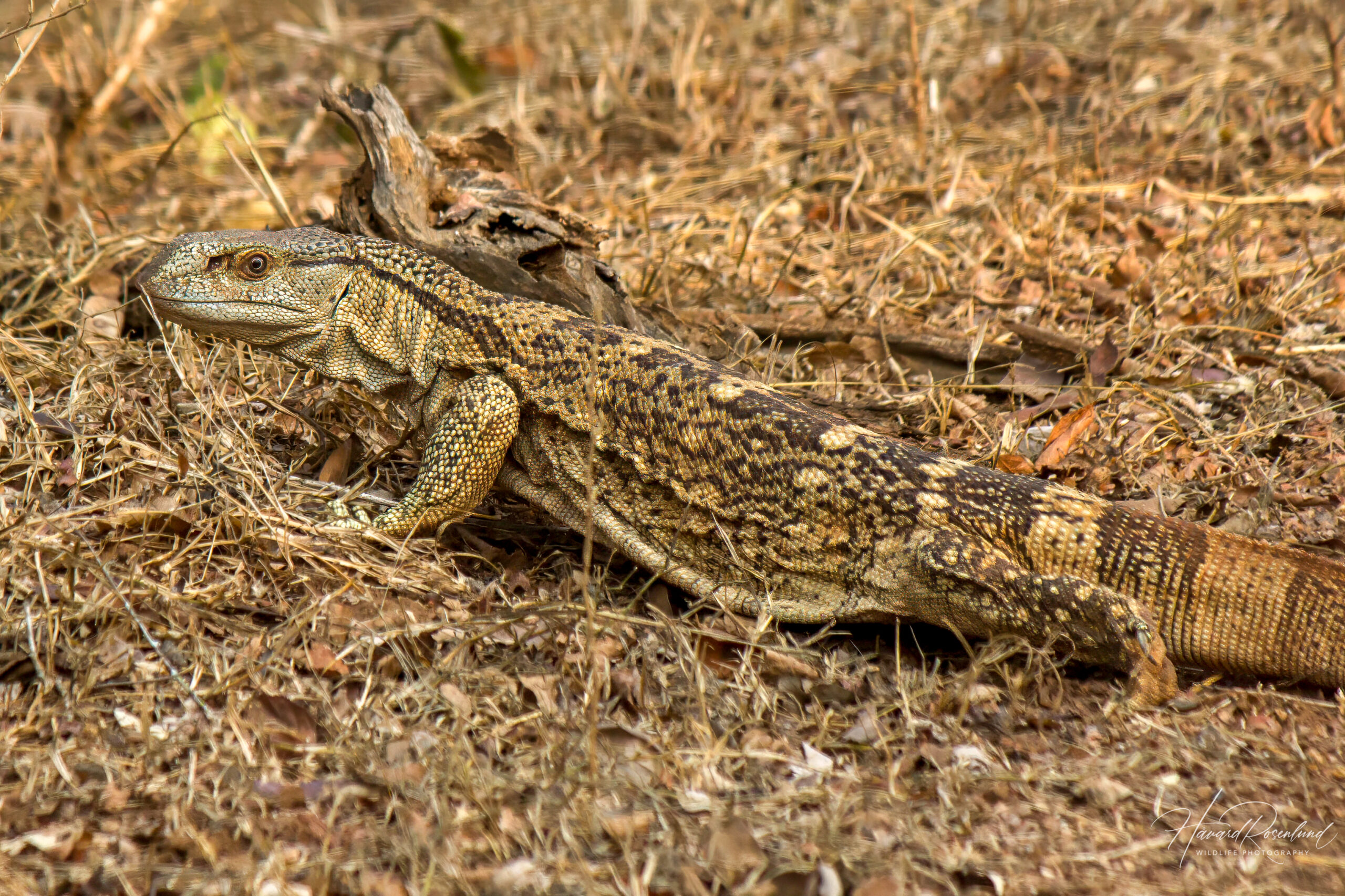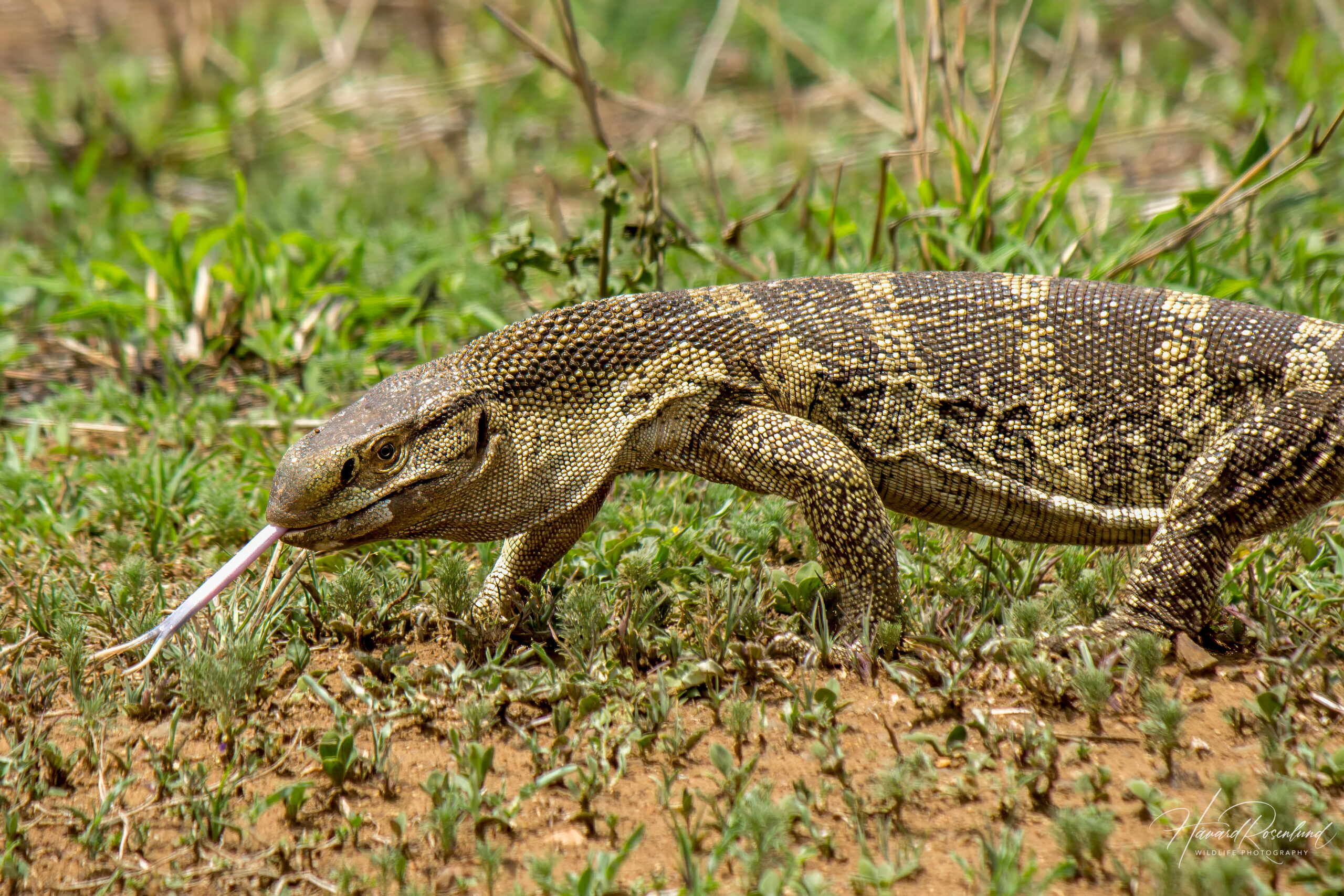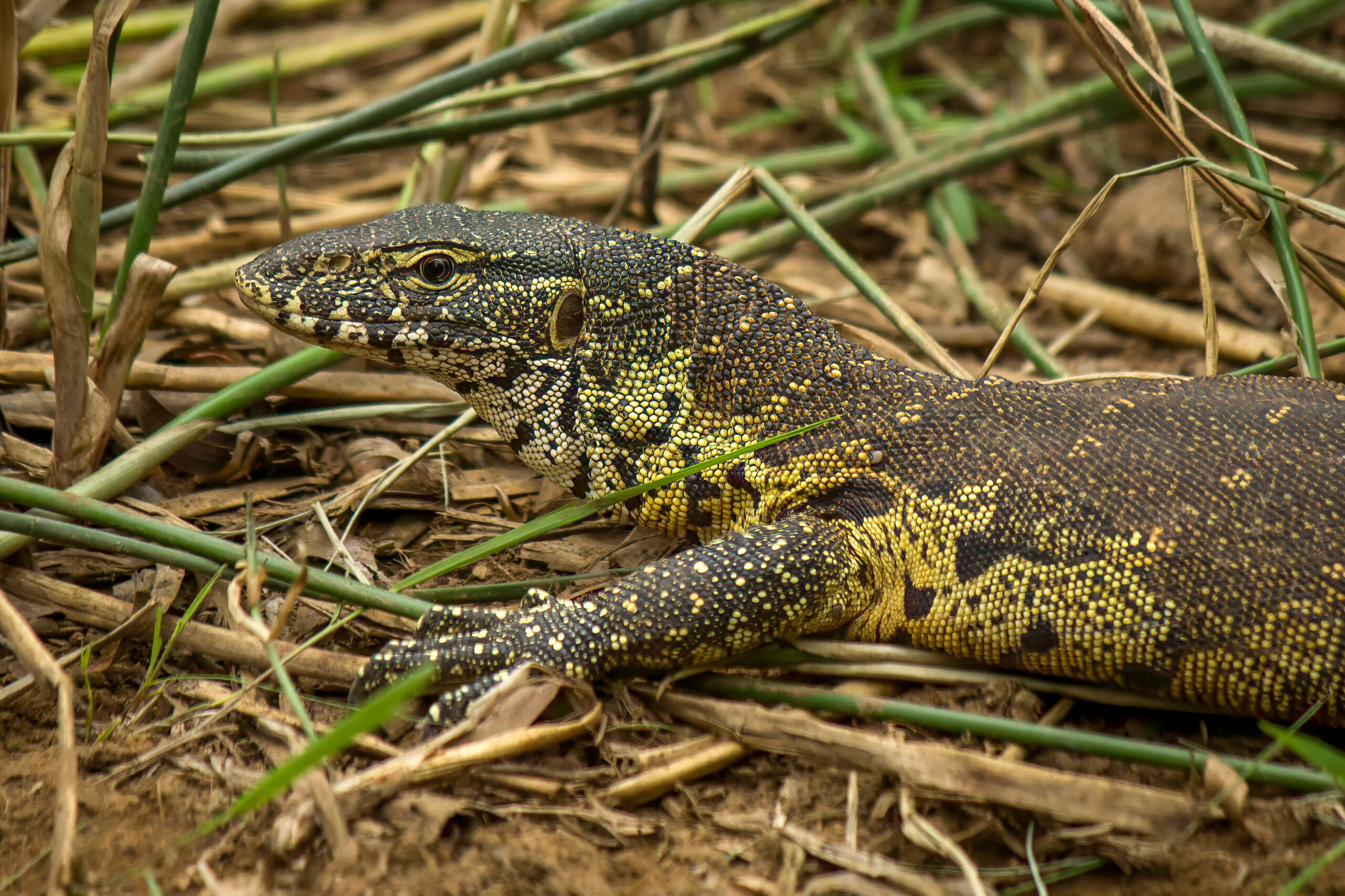Description
The rock monitor (Varanus albigularis), also known as white-throated monitor, is a monitor lizard native to Southern and Eastern Africa. It is a robust lizard known for its powerful build and agility. Adults can grow up to 2 meters (about 6.6 feet) in length and weigh between 12-20 kg (26-44 lb), making them one of the largest lizards in Africa. They have strong, muscular bodies, with a distinctively broad head and a pronounced snout. Their skin is rough and scaled, typically gray or brown, with patterns of lighter spots or bands. The throat is often white or cream-colored.
Subspecies
There are three recognized subspecies of rock monitor, which differ slightly in size and coloration,:
- Varanus albigularis albigularis: Found in southern Africa, characterized by a more robust body and darker coloration.
- Varanus albigularis angolensis: Native to Angola and surrounding regions, this subspecies tends to have a lighter coloration and a slightly smaller build.
- Varanus albigularis microstictus: Known as the black-throated monitor, found in East Africa. It’s distinct for its darker throat and larger size.
Diet & Habitat
Rock monitors are versatile in their habitat preferences, residing in environments ranging from dry, arid regions to bushveld and savannahs. They are even found in suburban areas where they can find shelter and food. Their diet is carnivorous and varied, including insects, small mammals, birds, eggs, and carrion. They are skilled climbers and diggers, which aids them in hunting and foraging. Their hunting strategy involves both active pursuit and ambush, using their strong jaws and sharp claws to overpower prey. Rock monitors are also known for their intelligence and problem-solving abilities. They have been observed using tools and strategies to access food.
Reproduction
Sexual maturity in rock monitors is reached at about 2-3 years of age. The breeding season typically occurs in the warmer months. Males engage in combat for mating rights. Females lay clutches of up to 50 eggs, which is unusually large for lizards. The eggs are often deposited in burrows or termite mounds, where the temperature is regulated naturally. Incubation can last several months, and the young are independent from birth, receiving no parental care. The hatchlings are miniature versions of the adults and quickly start fending for themselves. These lizards are known for their longevity, with some individuals living up to 20 years in the wild.
Status
The rock monitor is not presently at risk of extinction in the wild. However, habitat destruction and the illegal pet trade pose potential threats. Conservation efforts focus on habitat preservation and regulating trade to ensure their continued survival in the wild. It is classified as least concern on the IUCN Red List.








